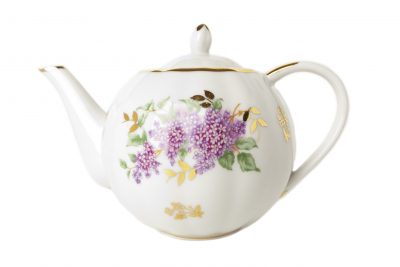 As bankers and financial advisors we must develop systems, policies and facilities that meet the every changing needs of people living with dementia, allowing independence to access and manage their money without fear of financial abuse. Creating a dementia friendly bank will require training, education – and looking at their world through a different lens.
As bankers and financial advisors we must develop systems, policies and facilities that meet the every changing needs of people living with dementia, allowing independence to access and manage their money without fear of financial abuse. Creating a dementia friendly bank will require training, education – and looking at their world through a different lens.
A 2012 UK study showed that 75% of those living with dementia have difficulty with banking. This may be due to lack of knowledge of dementia by front line staff and their ability to recognize, respond and assist customers living with dementia.
Banks should asses their customer service areas to ensure adequate lighting, seating, safety and quiet areas where a person living with dementia, their caregivers and bank personnel can discuss banking matters.
Fidelity Investment Survey of Advisors recently disclosed these alarming statistics:
- 84% of respondents said they had clients with dementia
- 96% said they don’t feel prepared to deal with them
- 50% don’t think they can even raise the concern with a customer
Some of the warning signs that a client may be living with dementia include:
- Confusion with payments and documents
- Repeating the same question over and over
- Checks not filled out properly
- Forgetting to update checkbook transactions
- Decline in ability to do basic math
- Poor judgement in investment strategy
- Interest in “get rich quick” schemes
- Misuse of money by a third party
How can we improve communications?
- Slow down and allow the customer to process what you said and to respond
- Use short, simple sentences
- Ask one question at a time
- Avoid arguing
- Train staff to detect warn signs
- Have a quiet place to talk without distractions or background noise
Process and procedures to put in place may include:
- Voice recognition or eye scan technology instead of password requirement
- Algorithms to help detect changes in spending patterns
- Black online and/or phone access
- Use credit or gift card with restricted limit instead of a debit card
- Reward staff who uncover scams
- Designate POA (Power of Attorney) up front in case customer can’t make decisions
- Ways to set up a POA if there is concern about control or undue influence by others: 1) In early stages, make access “view only” 2) Bank can delay certain suspicious payments until contact with POA 3) Limit POA to handle only certain transactions
Contributing author Kathy Wetters is a Master Trainer for AGE-u-cate® Training Institute, whose Dementia Live™️ experience is helping organizations elevate their status as age friendly – dementia friendly businesses.
 I have always been a proponent that if something is just not working well, shifting gears may be a solution. Let’s face it – everything is changing fast these days, so much so that it seems as if technology leads the pack in shifting gears at every juncture of our daily lives.
I have always been a proponent that if something is just not working well, shifting gears may be a solution. Let’s face it – everything is changing fast these days, so much so that it seems as if technology leads the pack in shifting gears at every juncture of our daily lives. The increasing diversity of the U.S. and other nations offers opportunities and challenges for senior care care providers, health care systems, and policy makers to create and deliver services to culturally diverse patients and to train and increasingly culturally diverse workforce. Cultural competence refers to an ability to interact effectively with people of different cultures. Cultural competence comprises four components: (a) awareness of one’s own cultural worldview, (b) attitude towards cultural differences, (c) knowledge of different cultural practices and worldviews, and (d) cross-cultural skills. Developing cultural competence through training can result in a better ability to understand, communicate with, and effectively interact with people across cultures and can lead to a 15% decrease in miscommunication. In senior care, this communications training can significantly improve outcomes, especially in caring for those with dementias, chronic illness, pain and at end-of-life.
The increasing diversity of the U.S. and other nations offers opportunities and challenges for senior care care providers, health care systems, and policy makers to create and deliver services to culturally diverse patients and to train and increasingly culturally diverse workforce. Cultural competence refers to an ability to interact effectively with people of different cultures. Cultural competence comprises four components: (a) awareness of one’s own cultural worldview, (b) attitude towards cultural differences, (c) knowledge of different cultural practices and worldviews, and (d) cross-cultural skills. Developing cultural competence through training can result in a better ability to understand, communicate with, and effectively interact with people across cultures and can lead to a 15% decrease in miscommunication. In senior care, this communications training can significantly improve outcomes, especially in caring for those with dementias, chronic illness, pain and at end-of-life. I was very fortunate, for when my sweet mom passed, no one else asked for “the teapot”. It wasn’t particularly pretty, and certainly of no monetary value. But to me it was priceless reminder of the tender moments we had together to talk about an endless number of topics that mothers and daughters share. Often accompanied by a scrumptious homemade sweet, we always had back-up favorites in the freezer so we were never without an accompaniment for our favorite Bigelows “Constant Comment”. When we weren’t chatting and sipping, we would often play a quick game of Yahtzee, Gin Rummy or in latter years, our absolute favorite go- to game, Rumikub.
I was very fortunate, for when my sweet mom passed, no one else asked for “the teapot”. It wasn’t particularly pretty, and certainly of no monetary value. But to me it was priceless reminder of the tender moments we had together to talk about an endless number of topics that mothers and daughters share. Often accompanied by a scrumptious homemade sweet, we always had back-up favorites in the freezer so we were never without an accompaniment for our favorite Bigelows “Constant Comment”. When we weren’t chatting and sipping, we would often play a quick game of Yahtzee, Gin Rummy or in latter years, our absolute favorite go- to game, Rumikub.